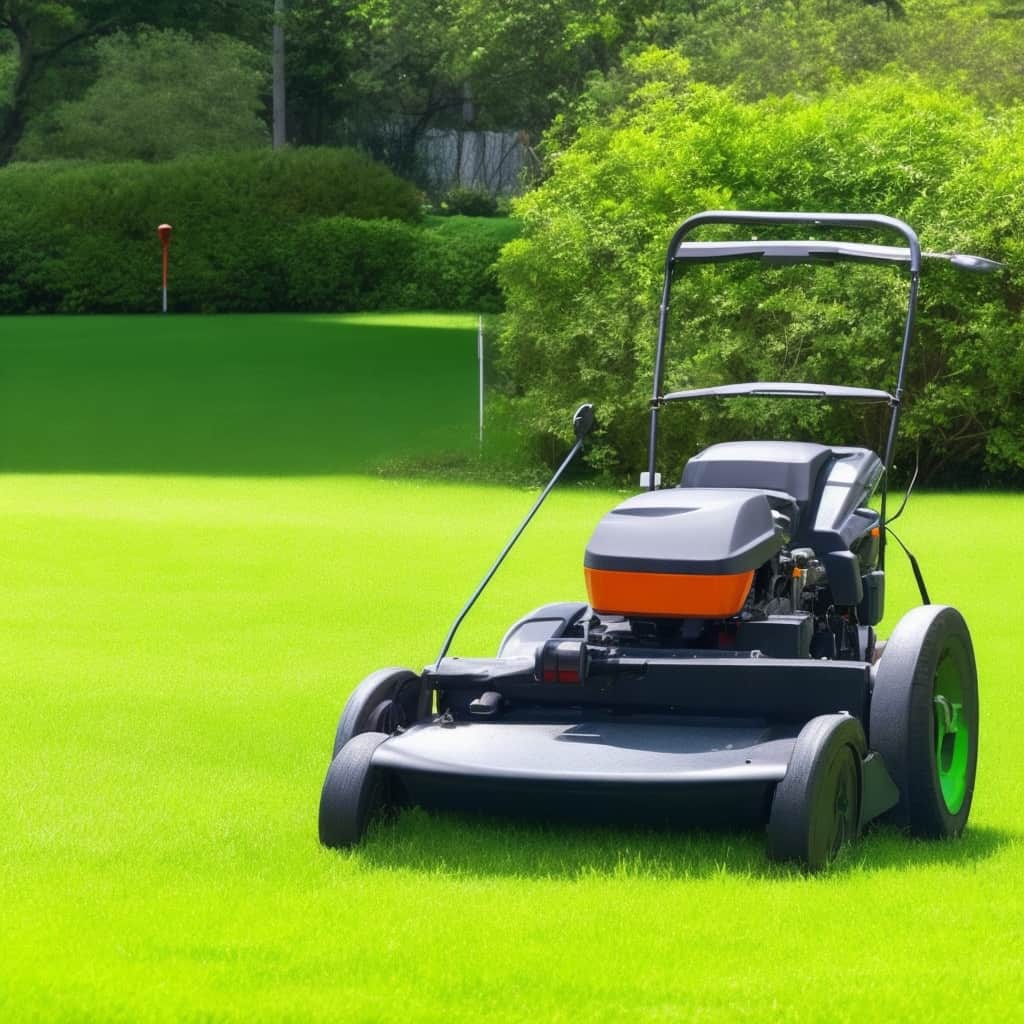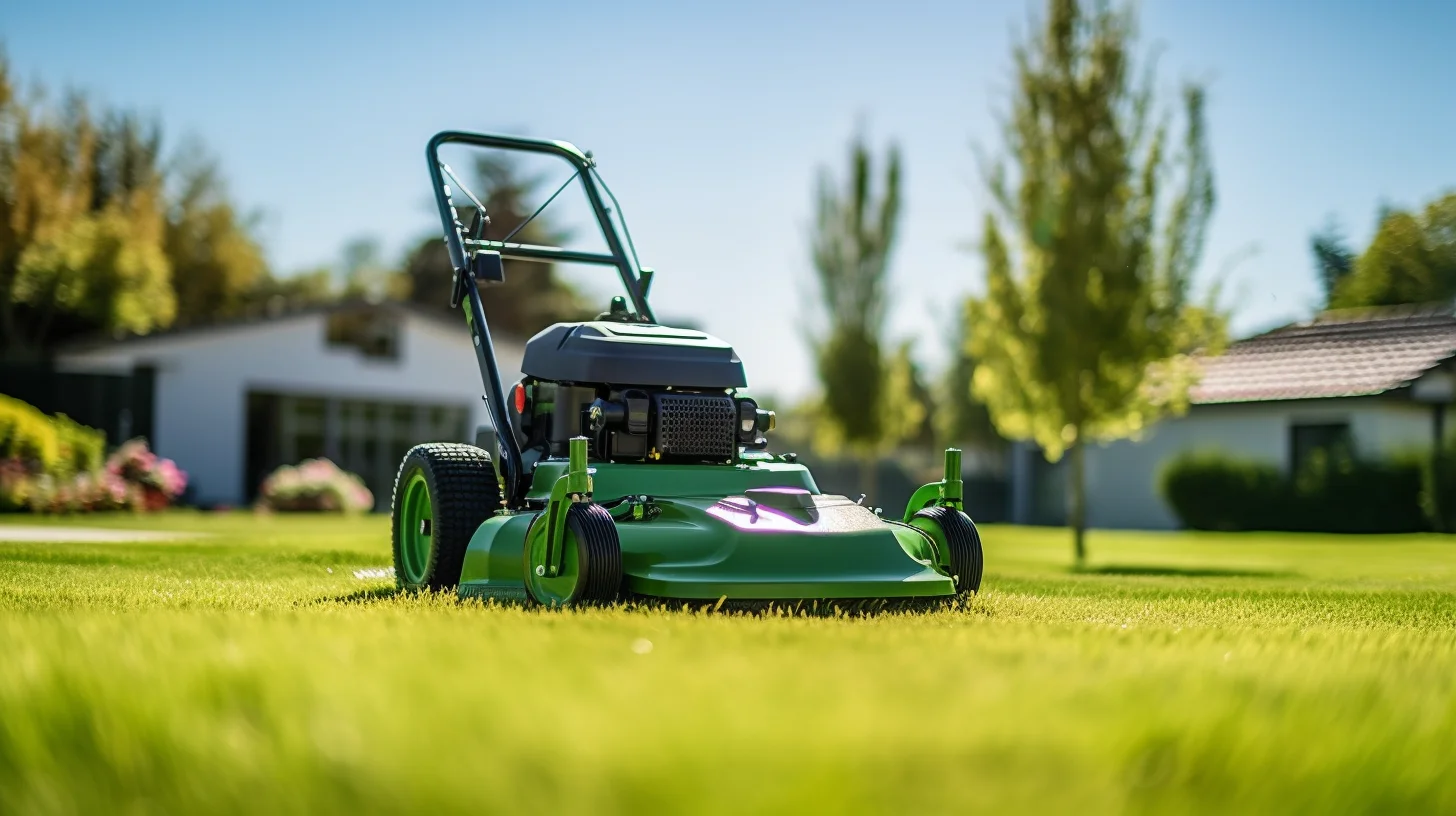Introduction
A well-maintained lawn not only enhances the beauty of your home but also provides a space for relaxation and outdoor activities. In this professional guide to DIY lawn care, we will explore various aspects of lawn maintenance, including fertilizing, weed control, watering techniques, aeration, overseeding, monitoring growth, and more. By following these expert tips and techniques, you can achieve a lush and vibrant lawn throughout the year.
Properly Fertilizing Your Lawn
To promote optimal grass growth and maintain a healthy lawn:
Choose the Right Fertilizer
- Consider your soil type and grass species when selecting fertilizer.
- Look for a balanced fertilizer with nitrogen (N), phosphorus (P), and potassium (K) in the correct ratios.
Application Techniques
- Follow the recommended application rates provided by the manufacturer.
- Apply fertilizer evenly using a spreader or by hand.
- Water your lawn after fertilization to ensure proper absorption.
Regular fertilization provides essential nutrients that promote healthy root development and overall plant vigor.
Removing Weeds and Using Herbicides
Weeds can quickly invade your lawn, competing with grass for nutrients, water, and sunlight. To effectively remove weeds:
Manual Removal
- Identify common weeds in your area to determine appropriate removal methods.
- Pull weeds by hand or use tools like weed pullers or dandelion diggers.
Using Herbicides
- Herbicides can be an effective weed control method when used correctly.
- Follow label instructions carefully to ensure safety and effectiveness.
- Consider selective herbicides that target specific weeds while sparing desirable plants.
By implementing proper weed control measures, you can maintain a weed-free lawn that allows your grass to thrive.
Properly Watering Your Lawn
Proper watering is essential for maintaining a healthy lawn throughout the year:
Watering Techniques
- Water deeply but infrequently to encourage deep root growth.
- Use sprinklers or irrigation systems that provide even coverage.
- Adjust watering frequency based on weather conditions.
Water Conservation Tips
- Water early in the morning to minimize evaporation.
- Consider installing rain sensors or smart irrigation systems that adjust watering based on weather data.
Efficient watering techniques not only conserve water but also promote strong root development and overall plant health.
Aerating and Dethatching Your Lawn
Aeration and dethatching are vital practices that help maintain healthy grass growth:
Aeration Process
- Use specialized equipment like aerators to create small holes in the soil.
- Alleviate soil compaction by allowing air, water, and nutrients to reach grassroots.
Dethatching Process
- Remove excessive layers of dead grass (thatch) using dethatching rakes or power dethatchers.
- Thatch removal improves water penetration into the soil while reducing disease risks.
Regularly aerating and dethatching your lawn promotes better nutrient absorption, reduces soil compaction, and encourages healthier turf growth.
Overseeding Your Lawn
Overseeding is an effective technique for rejuvenating thin or patchy lawns:
Benefits of Overseeding
- Increases turf density by introducing new grass varieties into existing lawns.
- Enhances color vibrancy while improving resistance to pests and diseases.
Steps for Successful Overseeding
- Choose high-quality grass seed suitable for your climate zone and existing grass type.
- Prepare the soil by removing debris, loosening it with a rake or tiller, and leveling any uneven areas.
- Spread the seed evenly over the entire area using a spreader or by hand broadcasting.
4.Water regularly after overseeding to keep the soil moist until new grass establishes itself.
Overseeding helps fill in bare spots, improves turf density, enhances color vibrancy,and increases resistance to pests & diseases
Monitoring Growth And Adjusting Care Routine
Regular monitoring of your lawn’s growth allows you to identify potential issues early on:
Signs of Healthy Growth
- Watch out for signs of stress such as discoloration or thinning areas of turfgrass.
- Adjust mowing height based on seasonal changes in grass growth rate & desired appearance
- Modify watering frequency according weather conditions – increase during hot spells; decrease during cooler periods
- Adapt fertilization schedules based on specific needs identified through monitoring
By closely observing your lawn’s health indicators throughout the year,you can make timely adjustments ensuring optimal results.
Easy Lawn Care Tips To Reduce Yard Chores
Simplifying yard chores can save time while still maintaining an attractive landscape:
- Use Natural Mulch: Apply organic mulch around trees & flower beds; it conserves moisture & suppresses weed growth reducing maintenance tasks like frequent watering & weeding
- Mow Regularly: Mow frequently enough so no more than ⅓ total leaf length removed each time; longer grass shades out weeds & requires less frequent mowing
- Leave Grass Clippings: Leave clippings on the lawn as they act as natural fertilizer providing nutrients back into soil
- Create Defined Edges: Create defined edges along garden beds & walkways using edging tools; it prevents encroachment of grass into unwanted areas
Implementing these easy tips will help reduce yard chores while keeping your landscape looking its best.
Expert Tips To Create A Better Lawn & Garden
Achieving a lush & vibrant landscape requires expertise; here are some professional tips:
- Improve Soil Quality: Test soil pH levels & amend accordingly with organic matter like compost
- Choose The Right Plants: Select plants suited for local climate conditions & consider factors like sun exposure & water requirements
- Implement Effective Landscaping Strategies: Plan garden beds strategically considering factors like aesthetics,functionality,& ease of maintenance
By following these expert tips,you can create an aesthetically pleasing landscape that thrives in harmony with its surroundings.
Applying Preemergence Herbicide To Stop Crabgrass
Preemergence herbicides prevent crabgrass seeds from germinating thereby controlling their growth effectively :
- Apply Preemergence Herbicide : Apply before crabgrass seeds germinate usually early spring
- Follow Label Instructions : Follow label instructions regarding application rates,timing, and safety precautions
- Water Lightly After Application : Ensure herbicide reaches target area by lightly watering after application
Applying preemergence herbicide at appropriate times helps prevent crabgrass infestation saving you time/effort spent on removing established plants.
Adding Mulch To Protect Trees And Avoid Trimming
Mulching around trees offers multiple benefits including protection from extreme temperatures,evaporation reduction, and weed suppression :
- Apply Mulch Properly : Apply 2-4 inches layer mulch around young trees avoiding direct contact trunk
- Use Organic Mulch Materials : Use wood chips,straw,bark nuggets etc as organic mulch materials
- Replenish Mulch Annually : Maintain desired depth replenishing mulch annually
Proper mulching reduces need trimming protecting tree trunks from mechanical damage while conserving moisture promoting healthy tree growth.
Setting Mower Blade To The Right Height To Control Weeds
Mowing at correct height plays significant role controlling weed population:
- Adjust Mower Blade Height : Adjust mower blade height according type turfgrass being grown refer recommended heights specific species
- Mow Frequently Enough : Mow frequently enough so no more than ⅓ total leaf length removed each time
- Proper Mowing Height Shades Out Weeds : Proper mowing height shades out weeds preventing their establishment
Mowing at right height ensures healthier,stronger turf which naturally suppresses weed competition promoting denser,lush lawns.
Conclusion
Maintaining a healthy, lush, and beautiful lawn requires consistent care utilizing proper techniques outlined above. By following this professional guide, you’ll be equipped with knowledge necessary achieving successful DIY lawn care routine. If you found this useful, we recommend checking out this article covering lawn care basics for homeowners. Encourage readers implement expert tips provided here ensuring long-term success in maintaining their own stunning landscapes. Thanks for reading! Please don’t hesitate to contact Clean X Pros for lawn care services in Calgary today!


